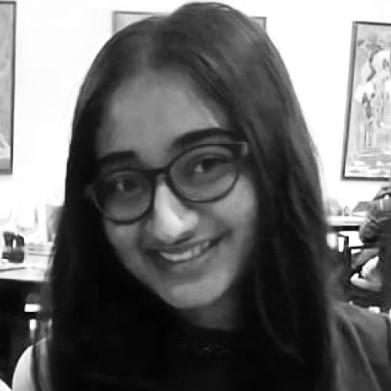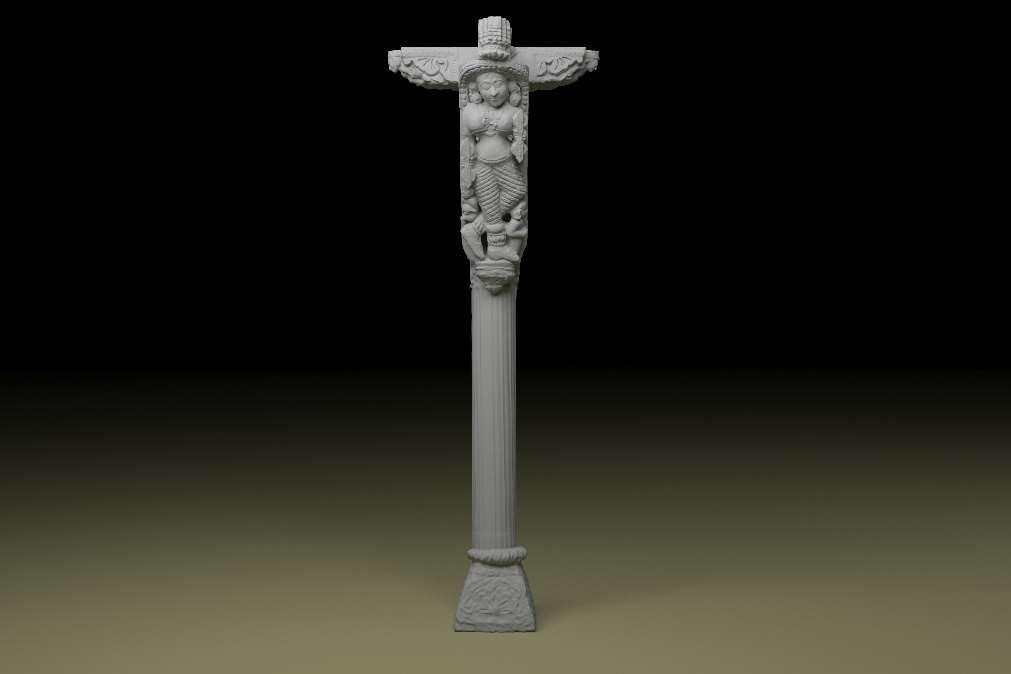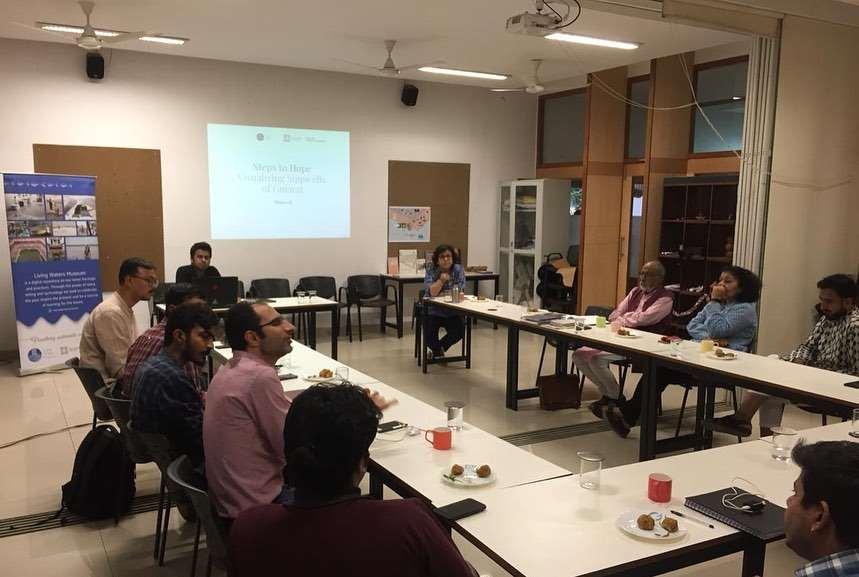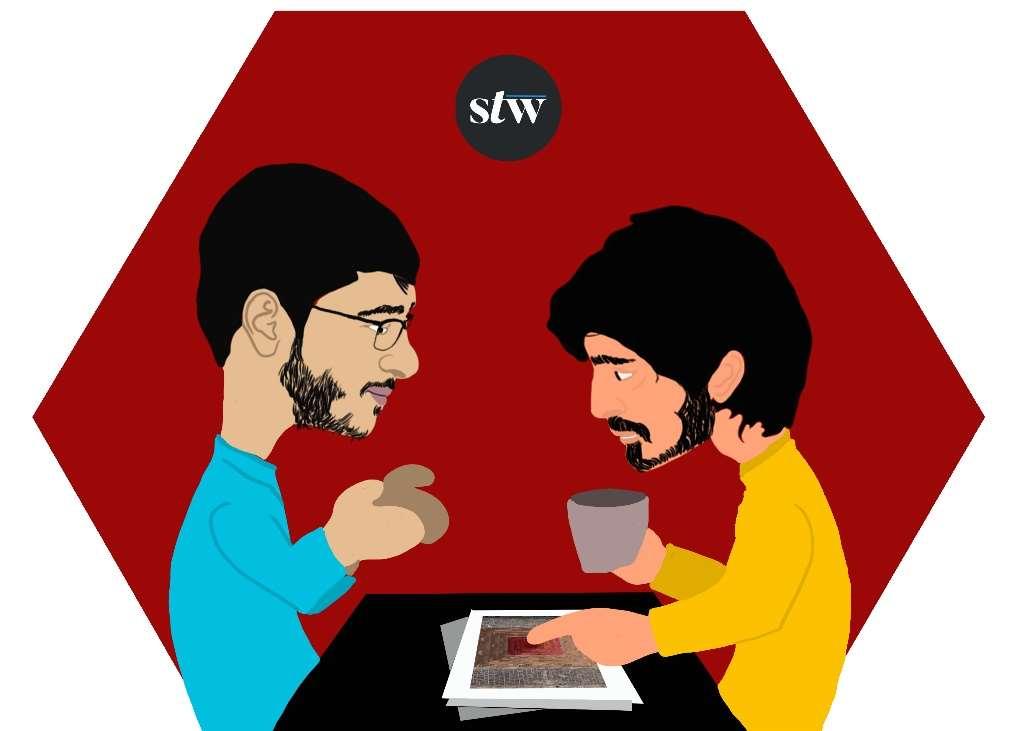ScantheWorld-India:AJourney
 (WrittenbyDivyarajsinhRana)
(WrittenbyDivyarajsinhRana)
TheBeginnings

Scan the World—India is a tale of reimagination, teamwork, excitement, and determination. The concept of Scan the World- India arose from a conversation between three like-minded individuals, Jon, Sasha and Ishita, in June 2018 at London. Soon after, she discussed the idea with her student turned colleague in India, Divyarajsinh. An ambitious vision of digitally documenting Indian art, architecture, and culture necessitated a significant commitment and a team that is sincerely interested in working with Indian culture. When Ishita returned to India with the vision for this initiative, she and Divyarajsinh brainstormed its scope and scale on a room wall. Yes, a room wall that is where it all took place. With two minds, one as a project directorandtheotherasaresearchdirector,therewasaneedforathirdtohandletechnicaltasks.
Divyaraj quickly recalled his partner in crime, the one with a technical mind, Neel, and invited himtojointheteamastheproject'stechnicaldirector.
Together they launched the initiative in January 2019 intending to create Scan the World- India as a para-academic space comprised of industry, research outfits, and university collaborations. The goal of Scan the World- India is to access lesser-known facets of Indian culture and to build a decolonized narrative-ecology of Indian cultural artefacts. The approach is to reinvent inquiry of cultural objects using the 3D technologies for its democratic potential. The cultural objects in India are narratives of belonging. The research conducted on these objects through art-historical, anthropological,andmaterialculturestudiesdemystifiesvariouslayersofnarrativeaboutthelife cycleoftheobject.Theseculturalobjects and theirnarrativesinthisvirtualecologyareexpected to play a crucial role in educating people by preserving the community's cultural history, historicalmemory,andidentity.
 Figure 1: A conversation in London, Illustrated by Divyarajsinh Rana.
Figure 1: A conversation in London, Illustrated by Divyarajsinh Rana.
TheTeam
The initiative that started with a core team of three- Ishita, Divyarajsinh & Neel, has recently expanded to six with voluntarily joining of three other Indian Culture enthusiastic- Rushil, Ruchesha&Kulvardhan.Totalkabouttheteambackground

IshitaJain is theResearch Director at Scan theWorld – India. She completed her B Arch from Gujarat University, Ahmedabad and earned MA in Architectural History from Bartlett School
 Figure 2: Wall of Beginnings. Illustrated by Divyarajsinh Rana
Figure 2: Wall of Beginnings. Illustrated by Divyarajsinh Rana
of Architecture, London. She is currently an Assistant Professor at O. P. Jindal Global University, Haryana. Her ongoing work focuses on pataphysical world-building, speculative thinking and design learning environments. Her research praxis is co-located across her teaching practices at university, research projects carried out with Living Midnight Narrative Outfit, and Outof India ArtistCollective.
Divyarajsinh Rana is the Project Director at Scan the World - India. He earned his B.Arch degree from Indus University, Ahmedabad. He is currently pursuing his MDes-PhD in Reimagining Transitions at Srishti Manipal Institute of Art, Design & Technology, Bangalore. His research-oriented works in his master’s program, commits and contributes toward developing Scan the World- India project. His interest as a transition designer lies at an intersection of heritage, technology and future making. To him heritage conservation and preservation practices can be intimately concerned with assembling, building, and designing future worlds, it can be for future orientation. Thus, he as a designer thrives for creating this heritage pluriverse as an alternative to cater the currently prevailing environmental and socioculturalissues.

Neel Mewada is the Technical Director at Scan the World-India. He earned his B.Arch degree from Indus University, Ahmedabad. He is currently a Principal Architect at his design firm named MN Architects in Gandhinagar. His personal interest is in product design, where he experiments with materials and wants to stretch their capabilities by crafting new details. His design practice challenges the notion of space making by exploring new concepts for various architectural, commercial, and interior projects.
Kulvardhan Ranawat is the creative advisor at Scan the World India. He completed his BDes in Communication Design from Symbiosis Institute of Design, Pune. He is currently pursuing his MDes in Information Art and Information Design Practices at Srishti Manipal Institute of Art, Design & Technology, where his design practice is focused on more than human world. His work revolves around planning and designing brand strategies in hospitality industry,






lifestyle industry, services and beyond. On weekends he turns himself into a traveler and a wildlife photographer.
Rushil Shah is the Technical Assistant at Scan the World, India. He has recently earned his B.Arch degree from Indus University, Ahmedabad and wants to pursue Masters from Singapore. He joined Scan the World- India to explore his keen interest in the juxtaposition of technology and architectural research. He covets the idea of preserving the historically important structures of deep cultural significance digitally with the help of photogrammetry and makingit a part of avirtual archive.

Ruchesha Thaker is the Research Assistant at Scan the World - India. She has recently graduated with B.Arch degree from Indus University, Ahmedabad. Currently she is working as a junior architect at Leo Pereira architects, Ahmedabad. Her research interest lies at an

extension of her bachelor’s thesis project which focuses on the part to whole relationships in built form.

TheProjects
 Figure 3: Kayubha no Delo, Fedra, Ahmedabad, Gujarat. Ancestral home of Divyarajsinh Rana.
Figure 4: Scanning the wooden columns at Fedra. Illustration by Divyarajsinh Rana.
Figure 3: Kayubha no Delo, Fedra, Ahmedabad, Gujarat. Ancestral home of Divyarajsinh Rana.
Figure 4: Scanning the wooden columns at Fedra. Illustration by Divyarajsinh Rana.
Startwhereyouare. Usewhatyouhave. Dowhatyoucan.
This quote highly resembles how the projects at Scan the World- India started. New to the technology, not knowing much about photogrammetry the journey had to be with trials, errors, and failures. For choosing what to scan the only priority kept was to scan the places that are accessible to the team. The team of three: Neel, Divyarajsinh & Ishita, with the list of most accessibleplaces,thefirstsetofobjectsscanned were the woodencolumnsatFedra.Fedrabeing the native place of Divyarajsinh, and the property being his ancestral home and shared by his uncles it was the perfect spot to experiment with scanning. It is at this place that Divyarajsinh and Neel explored and learnt all the technicalities of the photogrammetry. With this followed all other places and the objects accessible by the team to be scanned and archived. “Developing a portfolio” that is what the team called this, with their own personal work on the weekdays, the weekends became the gateway for scanning. Not only scanning but the explorations with the software’sfor post processing the scans was also carried out by Neelbeing thetechnicaldirector of the team. He has put his hands on 3D generating software like Agisoft, Capturing Reality, 3DFZephyr,etc.
-AnthurAshe
Doing the same for about a year, collectively working and spreading the word about the initiative, in December 2019 came the first project and the first successful collaboration for the team. Living Waters Museum Ahmedabad approached the team for documenting a stepwell as a

 Figure 5: A selfie with the column. Divyarajsinh and Neel 3D scanning at Fedra.
Figure 6: A Court Dancer. One of the 3D scanned and generated column from Fedra.
Figure 5: A selfie with the column. Divyarajsinh and Neel 3D scanning at Fedra.
Figure 6: A Court Dancer. One of the 3D scanned and generated column from Fedra.
part Steps to Hope project for developing a virtual water museum. After looking at various stepwells to choose from, both the teams finally decided to go with Shakti Kund at Akhaj for its richhistoryandaccessibilityfor3Ddocumentation.

 Figure 7: Aerial view of Shakti Kund at Akhaj.
Figure 8: Showcase meeting of steps to hope project at Living Waters Museum, Ahmedabad.
Figure 7: Aerial view of Shakti Kund at Akhaj.
Figure 8: Showcase meeting of steps to hope project at Living Waters Museum, Ahmedabad.
The challenge here for Scan the World- India team was to 3D scan the entire Kund with the method of photogrammetry as they never have put their hands on an entire structure of such a massive scale. Though applying their knowledge of the photogrammetry that they acquired throughout the year, they devised a strategic plan for carrying out the project. It took about a month for them aftertheprojectapproval, but they were successful in theirattempt of generating a detailed 3D scan of Kund. Happy with the output the collaboration between Scan the WorldIndia and Living Waters Museum has turned into a lifetime opportunity for all future scanning projects to be commissionedby themuseum. Scan the World- India thus currently arein process ofapproaching manymoremuseums and arecraftingeducationalprogramsfor developingmany moresuccessfulcollaborationsandprojects.
 Figure 9: Strategizing the action plan of Shakti Kund project. Illustration by Divyarajsinh Rana.
Figure 9: Strategizing the action plan of Shakti Kund project. Illustration by Divyarajsinh Rana.
TheUpcoming
This post partially presents and explains the journey that Scan the World- India has taken. Do wait for other upcoming blogposts where the team will bedefining and explaining theprocesses, goals and vision behind Scan the World-India, as well as will be presenting out various scanned objects,theirscanningstoriesandtheirlifestories.
 Figure 10: 3D Mesh of generated Shakti Kund Model
Figure 10: 3D Mesh of generated Shakti Kund Model
 (WrittenbyDivyarajsinhRana)
(WrittenbyDivyarajsinhRana)

 Figure 1: A conversation in London, Illustrated by Divyarajsinh Rana.
Figure 1: A conversation in London, Illustrated by Divyarajsinh Rana.


 Figure 2: Wall of Beginnings. Illustrated by Divyarajsinh Rana
Figure 2: Wall of Beginnings. Illustrated by Divyarajsinh Rana










 Figure 3: Kayubha no Delo, Fedra, Ahmedabad, Gujarat. Ancestral home of Divyarajsinh Rana.
Figure 4: Scanning the wooden columns at Fedra. Illustration by Divyarajsinh Rana.
Figure 3: Kayubha no Delo, Fedra, Ahmedabad, Gujarat. Ancestral home of Divyarajsinh Rana.
Figure 4: Scanning the wooden columns at Fedra. Illustration by Divyarajsinh Rana.

 Figure 5: A selfie with the column. Divyarajsinh and Neel 3D scanning at Fedra.
Figure 6: A Court Dancer. One of the 3D scanned and generated column from Fedra.
Figure 5: A selfie with the column. Divyarajsinh and Neel 3D scanning at Fedra.
Figure 6: A Court Dancer. One of the 3D scanned and generated column from Fedra.

 Figure 7: Aerial view of Shakti Kund at Akhaj.
Figure 8: Showcase meeting of steps to hope project at Living Waters Museum, Ahmedabad.
Figure 7: Aerial view of Shakti Kund at Akhaj.
Figure 8: Showcase meeting of steps to hope project at Living Waters Museum, Ahmedabad.
 Figure 9: Strategizing the action plan of Shakti Kund project. Illustration by Divyarajsinh Rana.
Figure 9: Strategizing the action plan of Shakti Kund project. Illustration by Divyarajsinh Rana.
 Figure 10: 3D Mesh of generated Shakti Kund Model
Figure 10: 3D Mesh of generated Shakti Kund Model